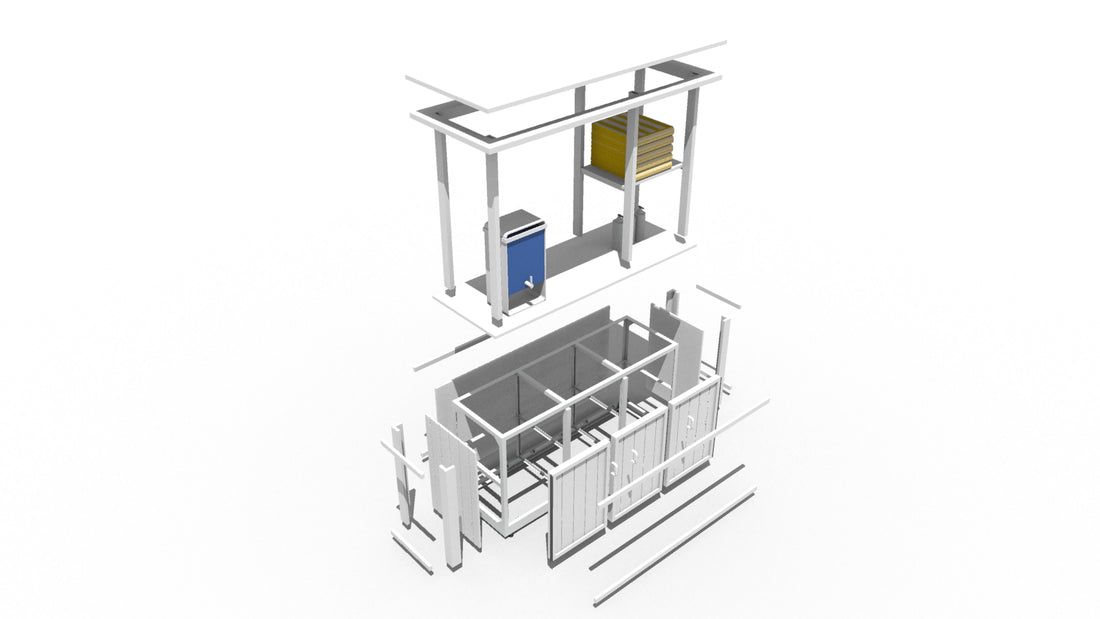In an era where sustainability has become an essential focus, optimizing material use and promoting furniture recyclability have emerged as crucial solutions to address the environmental challenges posed by the linear economy.

By adopting innovative design principles and manufacturing practices, we can revolutionize the way we create and dispose of furniture, unlocking a multitude of benefits for both the planet and our communities. At CustomBeach we have spent the last couple of years transforming the way we design and build or products in an effort to change the status quo.

In this blog post, we explore the advantages of optimizing material use and enabling furniture to be easily disassembled for recycling when discarded.

-
Minimizing Resource Consumption: By optimizing material use in furniture production, we can significantly reduce the amount of raw materials needed. Traditional manufacturing often involves overproduction and wasteful practices, resulting in excessive resource consumption and environmental degradation. Optimizing material use allows us to minimize waste and make the most of available resources, helping to conserve forests, reduce carbon emissions, and preserve natural habitats.
-
Extended Product Lifespan: Well-designed furniture that can be easily disassembled and recycled fosters a circular economy model. Instead of discarding furniture when it becomes outdated or damaged, disassembly and recycling enable the reutilization of components and materials. This process not only extends the lifespan of products but also reduces the demand for new resources, promoting a more sustainable approach to consumption.
-
Reduced Environmental Footprint: The ability to take furniture apart for recycling presents a valuable opportunity to reduce the environmental footprint associated with waste management. Traditional furniture disposal methods often involve landfilling or incineration, which contribute to pollution, greenhouse gas emissions, and land degradation. When furniture can be efficiently disassembled and recycled, it paves the way for a more environmentally friendly approach, reducing waste and diverting materials from landfills.
-
Enhanced Design Flexibility: Optimizing material use and incorporating disassembly features into furniture design can inspire creative and flexible design solutions. Manufacturers can explore modular concepts that allow for customization and adaptability, ensuring that furniture can be easily reconfigured or repaired. This approach not only caters to evolving consumer needs but also reduces the likelihood of furniture becoming obsolete or discarded due to minor damages.
-
Economic Opportunities and Job Creation: The shift towards optimizing material use and embracing furniture recycling opens up a range of economic opportunities. By promoting sustainable practices and supporting local recycling infrastructure, we can foster the growth of recycling industries, generating new jobs and bolstering the economy. Additionally, reusing and refurbishing furniture can create a thriving second-hand market, providing affordable options for consumers while reducing waste generation.
-
Consumer Engagement and Awareness: Designing furniture with recyclability in mind allows consumers to actively participate in sustainability efforts. By offering the option to disassemble and recycle furniture, manufacturers empower consumers to make environmentally conscious choices and contribute to the circular economy. This approach fosters a sense of responsibility, prompting individuals to consider the environmental impact of their purchasing decisions.
Conclusion: As we strive for a more sustainable future, optimizing material use and enabling furniture recycling are crucial steps toward a circular economy.

By embracing these practices, we can minimize resource consumption, reduce waste, and reduce our environmental footprint. Moreover, such initiatives create economic opportunities, enhance design flexibility, and encourage consumers to actively engage in sustainable practices.
At Custom Beach we have changed the way we build our products in an effort to harness the power of optimized material use and furniture recyclability to shape a brighter, more sustainable tomorrow by adopting these practices.


All the individual components in our products, from the countertops to trims, corners and panelling are mechanically fastened and can easily be removed, replaced and or recycled as needed.

